Our exhibition (National Pavilion of Mauritius at the 56-th Venice Biennale) is closed, alternatively, you can see our online exhibit here:
and on our website:
http://www.mauritiuspavilion.com
So it all began
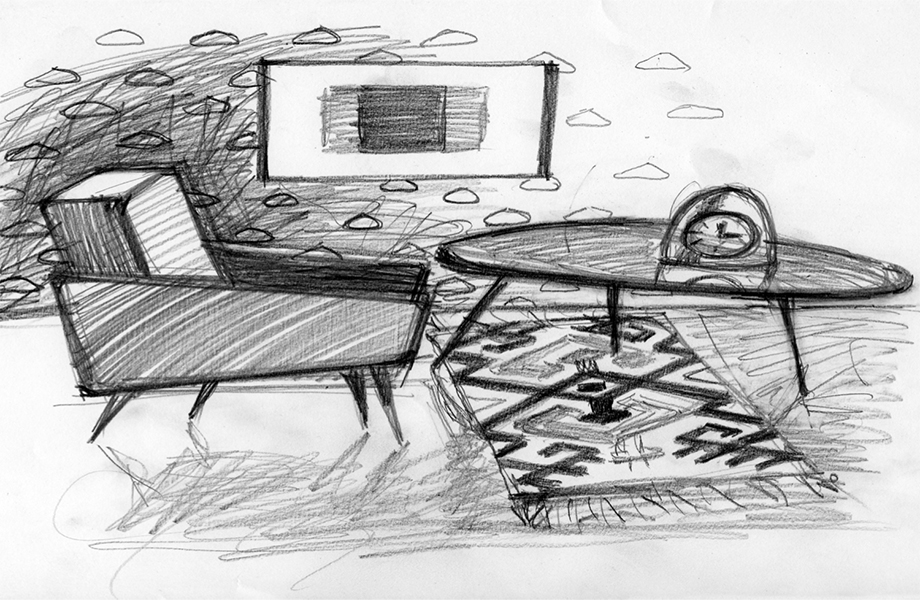
Sketch
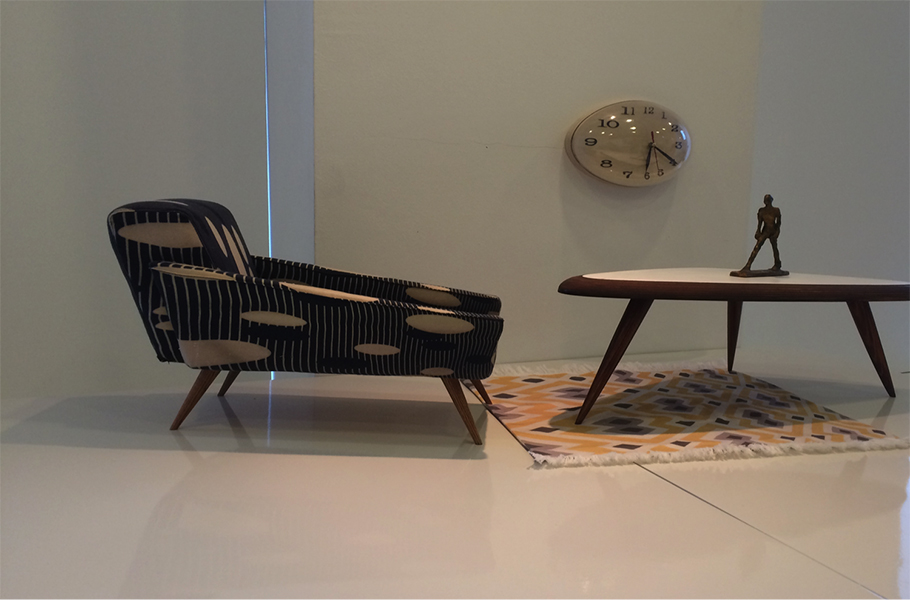
Model 1:10
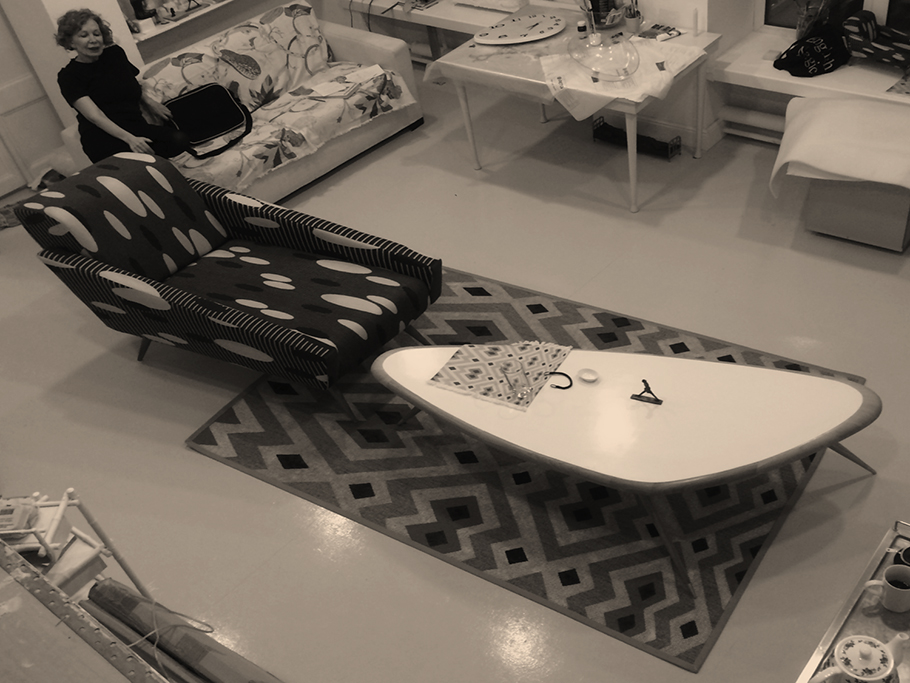
Before sending in Venice
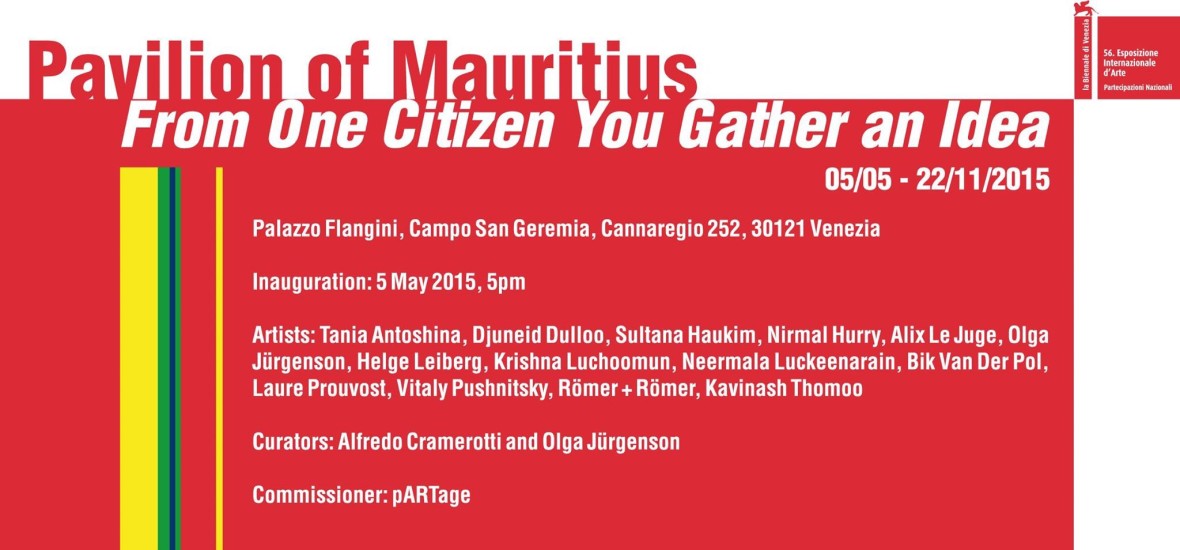
The exposition in the Palazzo Flangini
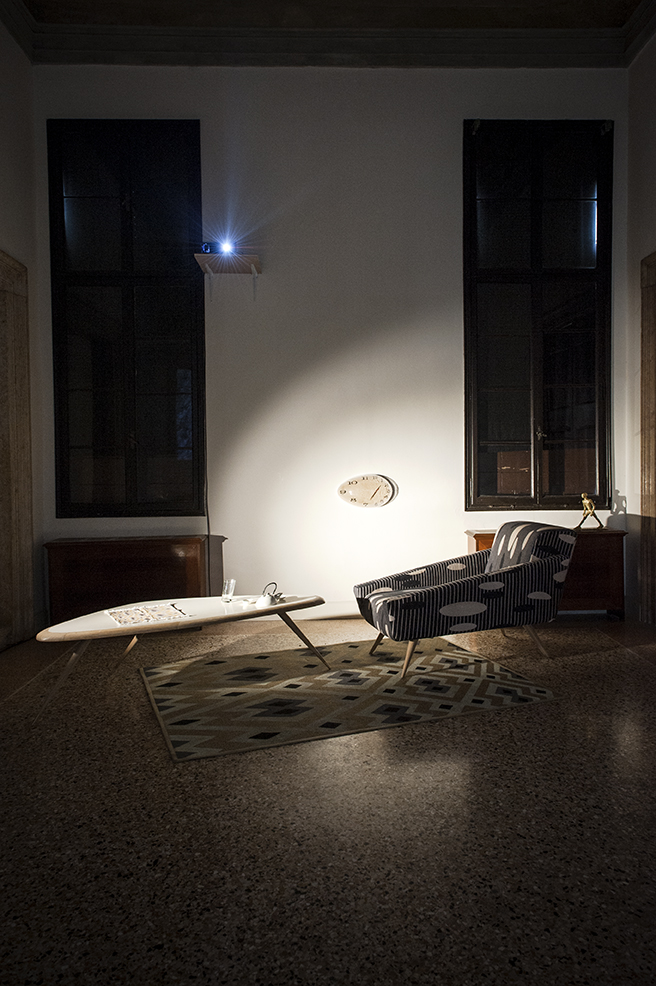
Photo by Alice Pedroletti
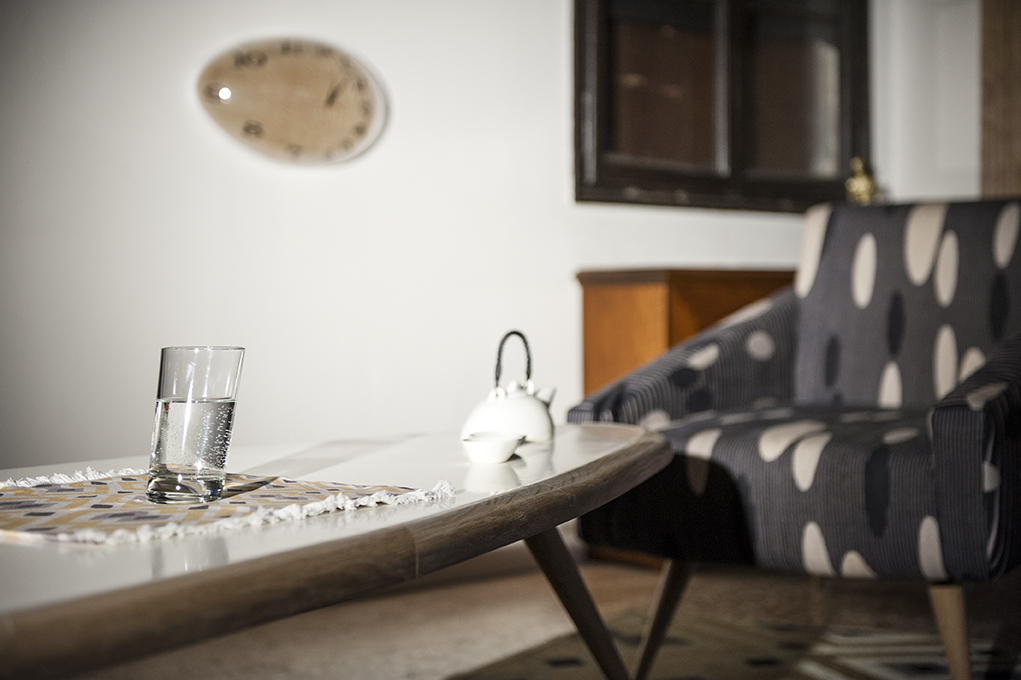
Photo by Alice Pedroletti
From the article
Identity and the Universal: a Dialogue among Four Artists
by Maria Starkova-Vindman
This enquiry of the role of the gaze – whether it is an integral part of the universal order, or merely determines an appearance of such order – is at the core of Tania Antoshina’s responding work Quantum Leap. The installation represents an interior space in which all seemingly ordinary objects – an armchair, coffee table with a teapot, a glass of water etc. – are distorted and stretched, as if, as the artist put it, ‘swept by the speed of light, or by the movement of the eye’. The artist equates such a movement of the gaze to a quantum leap, a transition to a different physical state. In this way, a change of the gaze and in the concept of an object is tantamount to a change in the object itself.
The work is captivating in its illusion of frozen motion: the objects, furniture pieces are solid, tangible, yet are perceived as though in movement, revealing our own stereotypes and expectations on what steady objects should look like. Recognizing our inner biases within such a setting is nevertheless not uncomfortable – there is a pleasant illusion that the time stood still (as in the deformed wall-mounted clock) and gave us the luxury of eternity to reassess our ‘optical unconscious’.
The multitude of potential gazes into an object – and therefore of potential states of that object as numerous, diverse forms – is cleverly referenced in the small statue in the installation. It cunningly recalls simultaneously two very different sculptures from the 20th-century culture: the famous Walking Man by Giacometti (if we imagine the objects stretching further) and a generic, socialist-realist statue of a stepping forward Lenin (if we imagine the objects in their ‘normal’ state and see a more realistic figure, similar, for example, to Walking Lenin by the famous socialist-realist artist Isaak Brodsky). The almost comical juxtaposition of these images – exemplifying an ideological and aesthetical antithesis of each other – was famously executed by Leonid Sokov in his Meeting of Two Sculptures (1990, bronze).[1] Here, however, an object, as a symbol of a specific aesthetic and political system, is not directly opposed to another, but it is the tuning of the gaze of the spectator that determines the object’s countlessly varied nature and its corresponding ideological systems. Thereby the spectator is acknowledged as a political agency of change, enabling transformation of one form into another. The quantum leap becomes a metaphor for a cultural or political transformation – such as, for example and in the artist’s words, ‘the transition of Mauritius to independence in the 1960s, and its autonomous cultural development … produced by the shift in the self-awareness of the people.’
[1] Reproduced in, for instance: Forbidden Art: The Postwar Russian Avant-Garde, edited by Garrett White, (New York: Distributed Art Publishers, 1998), p. 73.